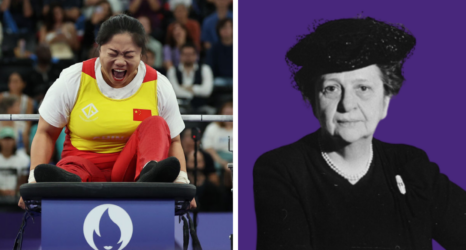The calendar may say 2010, but for women ski jumpers it’s still feeling like the 1950s when men competed and women watched. Ski jumping is the only winter Olympic event that doesn’t have a female competition.
In October, the 12-member executive board of the International Olympic Committee (IOC) met in Acapulco, Mexico to consider adding new events to the 2014 Winter Games, which will take place in Sochi, Russia. The wannabes include women’s ski jumping as well as ski halfpipe, ski and snowboard slopestyle and three coed events: biathlon mixed team relay, figure skating team event and luge team relay.
Blame it on the margaritas or maybe the sun, but the old boys couldn’t bring themselves to say “si “to the women ski jumpers’ request to join the Games. Instead, they said “wait and see.”
Yet the women ski jumpers and their supporters took hope from this latest non-decision. After all, the board didn’t say no, as it did at the Torino and Vancouver Olympics. But pushing the decision off until next spring, after the next World Cup event, is a major cop-out. Olympic athletes are supported by their national organizations, while non-Olympic athletes must raise their own money to compete. Olympic athletes stay in hotels with queen-size mattreses, while non-Olympic ones sleep on friends’ couches. Olympic athletes can earn millions from advertising endorsements, while non-Olympic ones work low-paying jobs that give them flexibility to train.
Jacques Rogge, the Belgian yachtsman who is the president of the IOC, insists that he needs more time to see if the sport has evolved. Perhaps someone should tell Rogge that ski jumping is older than he is: He was born in 1942 and women have been ski jumping since the 1920s. Women jumpers took a hiatus starting in the 1950s, however, when doctors said that the sport was too dangerous for them–that it might damage their female organs. No one worried if the men jumpers, who wear thin lycra onesy suits, risk frostbite on their private parts.
The women ski jumpers hoped that they would be allowed to jump at the 2010 Vancouver Olympic Games, because Canada has an antidiscrimination charter. But the IOC was not going to be governed by a host nation’s pesky law, and the women were denied their Olympic berth. As a last resort, the jumpers filed a lawsuit charging gender discrimination and asking the Canadian courts to allow them into the Games. The judge found evidence of gender discrimination, but ruled that the IOC was not subject to Canada’s anti-discrimination laws.
It was hard to watch men’s ski jumping in Vancouver knowing that the women were on the sidelines and that a woman, Lindsey Van, held the record jump on the competition hill before the Games began. And it was hard to watch alpine ski racer Lindsey Vonn (with an o not an a) win a gold medal knowing that ski jumper Van wasn’t allowed to compete. But it was especially hard to explain to my seven-year-old niece, whose mother was an Olympic rower, why the women ski jumpers couldn’t compete. “Because their girls?” she asked. That’s right, Zara, because they’re girls. “That’s not fair,” she pointed out.
Jacques Rogge, are you listening?
Photo of Holmenkollen ski jump in Norway under license from Creative Commons 3.0.





